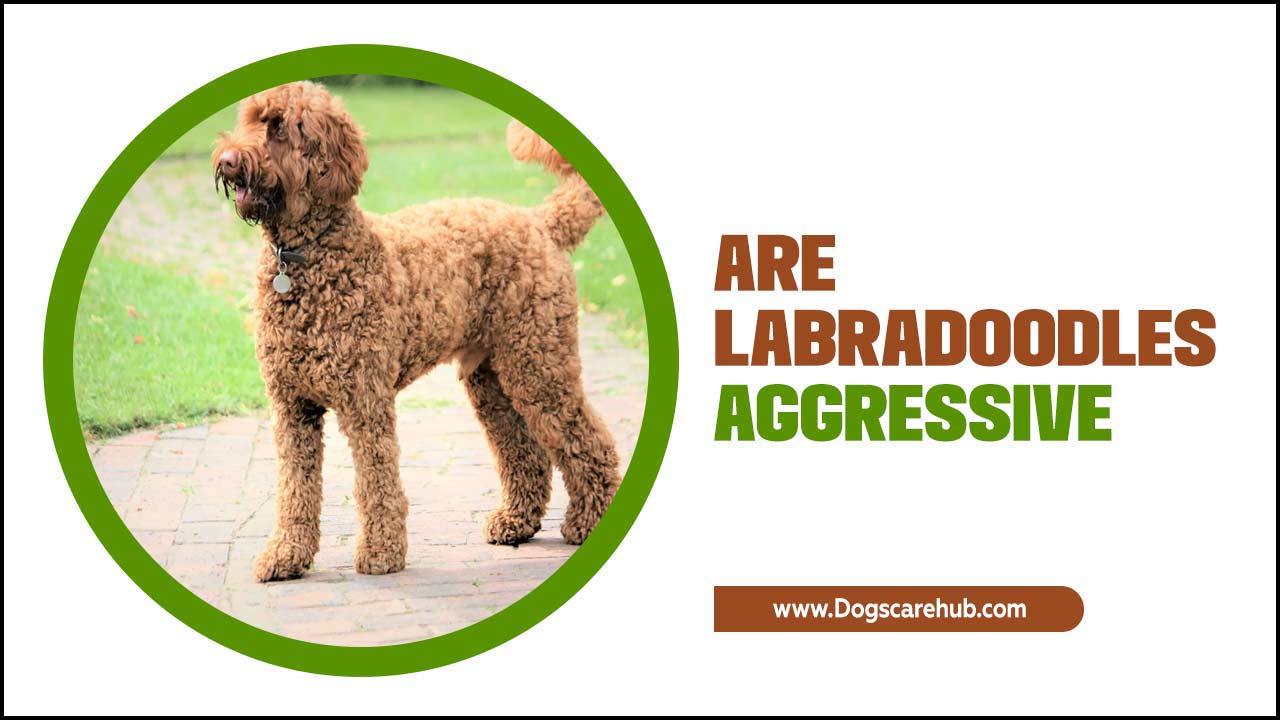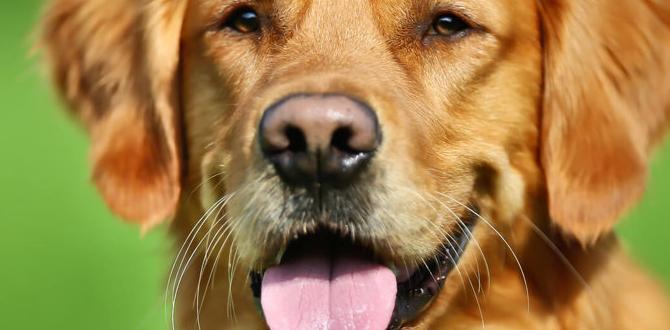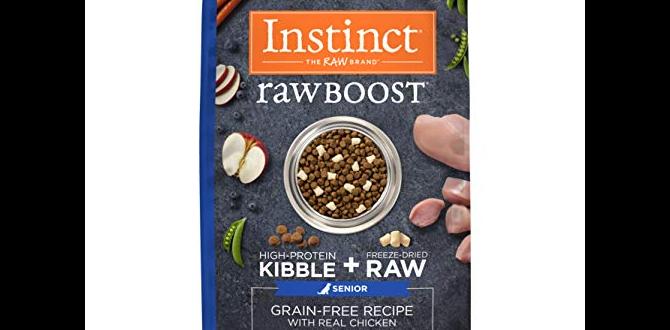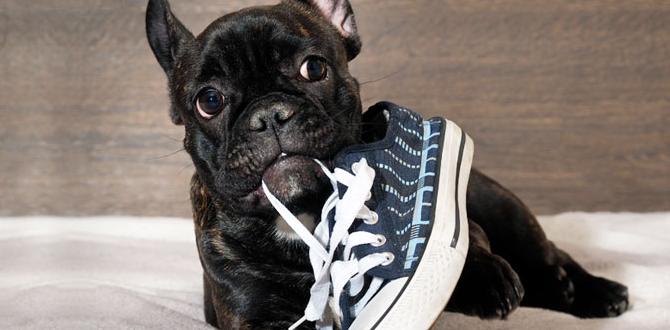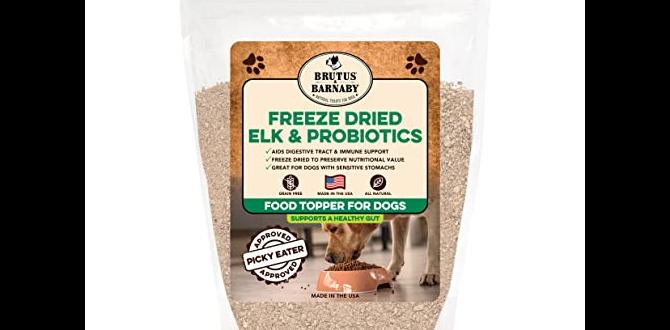Excessive licking in dogs can be stopped with a multi-pronged approach, addressing potential medical issues first, then tackling behavioral causes through redirection, enrichment, and environmental changes.
Is your furry friend constantly licking their paws, their owner, or even the air? It might seem like a cute quirk at first, but when that licking becomes excessive, it can worry you. You’re not alone if this is happening! Many dog parents notice their pups engaging in this behavior more than they think is normal. It’s important to understand why it happens and what you can do to help your dog feel more comfortable and relaxed. This guide will walk you through proven tips and solutions to help curb your dog’s excessive licking, bringing peace back to your home.
Why Do Dogs Lick Excessively? Understanding the Root Cause
Before we dive into solutions, it’s crucial to understand why dogs lick. Licking is a natural dog behavior, often used for grooming, communication, and self-soothing. However, when it becomes obsessive, it signals an underlying issue. These reasons generally fall into two main categories: medical and behavioral.
Medical Reasons for Excessive Licking
Sometimes, your dog’s licking is their way of telling you they’re not feeling well. Pain, allergies, and skin conditions are common culprits.
Pain or Discomfort: If your dog is licking a specific part of their body, like a paw or joint, it could be a sign of pain. This might be due to an injury, arthritis, a thorn, or even a tick embedded in their skin. The licking is their instinct to try and soothe the area.
Allergies: Dogs can suffer from environmental allergies (like pollen or dust mites) or food allergies. These often manifest as itchy skin, which dogs try to relieve by licking. Paw licking is especially common with allergies.
Skin Infections and Irritations: From bacterial or yeast infections to fungal issues like ringworm, many skin problems can cause irritation and discomfort, leading to excessive licking. Flea bites can also cause intense itching and licking.
Gastrointestinal Upset: Some dogs lick their lips excessively or the air when they are experiencing nausea or indigestion. This behavior, often called “lip-licking” or “air licking,” can be a subtle sign of an upset stomach.
Parasites: Fleas, ticks, and mites can cause significant discomfort and lead to frantic licking and scratching as your dog tries to get relief from the itching and biting.
Dry Skin: Especially in dry climates or during winter months, a dog’s skin can become dry and itchy, prompting them to lick.
Neurological Issues: In rare cases, excessive licking can be a symptom of a neurological condition, such as compulsive disorders or seizures. This is less common but something to consider if other causes are ruled out.
Behavioral Reasons for Excessive Licking
When medical causes are ruled out, the licking is often rooted in your dog’s emotional state or learned behaviors.
Stress and Anxiety: Like humans bite their nails, dogs may lick excessively as a coping mechanism for stress, anxiety, or fear. This could be triggered by separation anxiety, loud noises (like fireworks), changes in routine, or new people or pets in the house.
Boredom and Lack of Stimulation: A dog with too much energy and not enough mental or physical activity is prime for developing problem behaviors. Licking can become a self-entertaining activity when they have nothing else to do.
Compulsive Behavior (OCD): Sometimes, licking can escalate into a full-blown obsessive-compulsive disorder (OCD). This is often a learned behavior that started as a way to cope but has become a deeply ingrained habit, even when the initial trigger is gone. Obsessive paw licking that results in raw, inflamed skin is a common sign.
Attention Seeking: If you tend to give your dog a lot of attention (even negative attention) when they lick, they might learn to do it to get you to interact with them.
Grooming: While dogs groom themselves naturally, excessive licking can sometimes be an overzealous attempt to keep clean, especially if they’ve rolled in something unpleasant.
Pica: This is a condition where dogs eat non-food items, and sometimes it can manifest as excessive licking of surfaces or objects.
Step-by-Step Solutions: Proven Tips for Excessive Licking
Addressing excessive licking requires patience and a systematic approach. Here’s a breakdown of proven tips, starting with the most critical step.
Step 1: Rule Out Medical Causes with Your Veterinarian
This is the absolute first step. Trying to treat a behavioral issue when there’s an underlying medical problem will be ineffective.
Why this is crucial: You need to make sure your dog isn’t in pain or suffering from an illness. A veterinarian can identify and treat conditions like skin infections, allergies, parasites, or pain that are causing the licking.
What to expect at the vet:
- A thorough physical examination.
- Questions about your dog’s diet, behavior, and environment.
- Possible diagnostic tests: skin scrapings, allergy testing, blood work, or X-rays.
- A treatment plan which might include medication (antibiotics, antifungals, steroids, antihistamines), topical treatments, or dietary changes.
External Resource: For more on identifying and managing allergies in dogs, the American College of Veterinary Nutrition offers valuable insights: Dog Food Allergies – American College of Veterinary Nutrition
Step 2: Address Behavioral Triggers and Solutions
Once medical issues are cleared, you can focus on behavioral modifications.
A. Managing Stress and Anxiety
If your vet suspects stress or anxiety is the cause, creating a calmer environment is key.
Identify Stressors: Pay close attention to when your dog licks excessively. Does it happen when you leave? During thunderstorms? Around strangers? Knowing the triggers is the first step to managing them.
Create a Safe Space: Designate a quiet, comfortable area for your dog where they can retreat when feeling overwhelmed. This could be a crate, a cozy bed in a low-traffic room, or a specific corner with their favorite toys.
Desensitization and Counter-Conditioning: For specific phobias (like thunderstorms or fireworks), work with a professional trainer or behaviorist to gradually expose your dog to the trigger at a low intensity while pairing it with positive experiences (treats, praise). For separation anxiety, start with very short departures and gradually increase the time away.
Calming Aids: Various products can help.
- Pheromone diffusers or sprays: Mimic natural calming pheromones dogs emit.
- Calming supplements: Look for those with L-theanine, tryptophan, or specific herbal blends. Always discuss with your vet before starting supplements.
- Thundershirts or anxiety wraps: Provide gentle, constant pressure that can have a calming effect.
Professional Help: For severe anxiety or OCD, consult a certified veterinary behaviorist or a certified professional dog trainer with experience in behavior modification. They can create a tailored plan, which might include medication prescribed by your vet.
B. Combating Boredom and Lack of Stimulation
A dog that’s mentally and physically tired is less likely to engage in problematic licking.
Increase Physical Exercise: Ensure your dog gets enough daily exercise appropriate for their breed, age, and energy level.
- Daily Walks: Aim for at least one, preferably two, walks a day.
- Running or Fetch: If your dog enjoys it and is physically able.
- Swimming: A great low-impact exercise for many dogs.
Provide Mental Stimulation: This is often as important as physical exercise for preventing boredom.
- Puzzle Toys: Food-dispensing toys (like Kongs filled with treats, frozen peanut butter, or kibble) make dogs work for their food and engage their brains.
- Trick Training: Teach your dog new commands or tricks. Even 5-10 minutes of training sessions daily can make a difference.
- Nose Work/Scent Games: Hide treats around the house or garden and encourage your dog to find them. This taps into their natural scenting abilities.
- Chew Toys: Offer a variety of safe and durable chew toys to satisfy their natural urge to chew.
Structured Playtimes: Dedicate time each day for interactive play with your dog, like tug-of-war (with rules) or fetch. This strengthens your bond and provides an outlet for energy.
C. Redirection and Interruption Techniques
When you catch your dog licking excessively, you need to interrupt the behavior and redirect them to something more appropriate.
Gentle Interruption: A sound (like a gentle “uh-uh”), a clap, or a soft toss of a toy can interrupt the licking without scaring your dog. The goal is to distract, not punish.
Redirect to an Appropriate Activity: Immediately after interrupting, offer a toy, a chew, or start a brief training session or game. You want to show your dog what they should be doing instead.
Reward Good Behavior: Lavish praise and treats when your dog is calm, resting, or engaging in appropriate activities, especially when they aren’t licking. This reinforces positive choices.
Avoid Punishment: Punishing your dog for licking, especially if it’s compulsive, can actually worsen anxiety and stress, leading to more licking. Focus on positive reinforcement and management.
Step 3: Environmental and Practical Solutions
Sometimes, simple environmental changes or creative solutions can make a big difference.
A. Prevent Access to Irritating Areas
If your dog is fixated on licking a specific spot (like a wound or an itchy patch), you need to prevent them from accessing it while it heals or while you figure out the cause.
E-Collar (Cone of Shame):** While not ideal for long-term use, the Elizabethan collar is effective for preventing a dog from licking a wound or irritanted area that needs to heal. Make sure it’s the right size and fits properly.
Inflatable Collars: These are softer alternatives to traditional cones and can be more comfortable for some dogs. They prevent bending the neck to reach certain body parts.
Soft Booties or Socks: For paw licking, consider soft booties or socks. Ensure they fit well and don’t cause further irritation. Only use them under supervision.
Bitter Sprays: For licking furniture or other objects, a pet-safe bitter spray can deter them. Test on an inconspicuous area first and ensure your dog doesn’t have a negative reaction to the taste.
B. Enrich Your Dog’s Environment
A stimulating environment reduces boredom and canine stress.
Chew Toys: Provide a variety of safe and durable chew toys. Different textures and shapes can keep your dog engaged. Examples include Nylabones, Benebones, or natural chews like bully sticks (under supervision).
Lick Mats: These textured mats can be smeared with yogurt, peanut butter, or wet food, providing a long-lasting, calming activity. They are excellent for slowing down eating and offering mental stimulation.
Rotating Toys: Don’t leave all toys out all the time. Rotate them weekly to keep them novel and exciting.
Interactive Feeders: Use puzzle feeders or slow feeders for meals to make eating a more engaging activity.
C. Understanding and Managing Compulsive Licking
If licking has become a true compulsive behavior, it requires a dedicated approach.
Consult Professionals: Work closely with your veterinarian and potentially a certified professional dog trainer or veterinary behaviorist. Medication might be necessary in conjunction with behavior modification.
Management is Key: The goal is to manage the behavior and reduce its frequency, rather than expect it to disappear overnight. This involves intense redirection and enrichment.
High-Value Rewards: Use extremely enticing treats for redirection during moments when the licking might occur.
Focus on Building Confidence: Positive reinforcement training and successful skill-building can help boost a dog’s confidence, which can sometimes reduce compulsive behaviors.
When to Seek Professional Help
While many licking behaviors can be managed at home, some situations warrant immediate professional intervention.
Persistent Licking Despite Home Efforts: If you’ve tried the above tips consistently for a few weeks with no improvement, it’s time for more help. It might indicate a deeper issue you can’t identify.
Physical Injury: If the licking has caused raw, bleeding, or infected sores, you need to see a vet immediately to treat the wound and prevent further damage.
Sudden Change in Behavior: If excessive licking appears suddenly and is accompanied by other concerning symptoms (lethargy, appetite changes, vomiting, etc.), it could signal a serious medical emergency.
Aggression or Extreme Distress: If your dog becomes aggressive when you try to stop them from licking, or if they show extreme signs of distress, seek professional guidance from a vet or certified behaviorist.
Common Questions About Dog Licking
Here are answers to some frequently asked questions about this behavior:
Q1: My dog licks the furniture constantly. Is this a problem?
It can be, yes. Excessive licking of furniture might indicate boredom, anxiety, or even a gastrointestinal upset. If it’s compulsive, it could be a self-soothing behavior. Start by ensuring your dog has enough physical and mental stimulation. If it persists, consult your vet to rule out nausea or other health issues.
Q2: My older dog has started licking their paws a lot. What could it be?
Older dogs can develop new issues. Arthritis is a common cause of discomfort in older pets, and they might lick aching joints or paws. Allergies can also develop or worsen with age. A vet check-up is essential to determine the cause, which could be pain, allergies, or even a neurological change.
Q3: How can I stop my dog from licking my face?
If your dog licks your face excessively, it’s often an instinctual appeasement gesture or a bid for attention. The best approach is to consistently redirect the behavior. As soon as they start licking your face, gently turn away or stand up. When they stop and are calm, offer praise or a different activity, like a toy. Avoid pushing them away aggressively, as this might be interpreted as play.
Q4: My dog licks their private area a lot. Should I be worried?
Yes, you should investigate. Excessive licking of the genital or anal area can indicate irritation, infection (urinary tract infection, yeast infection, bacterial infection), or even problems with the anal glands. It’s a good idea to schedule a vet visit so they can check for any underlying medical conditions.
Q5: Can I use a cone permanently if my dog won’t stop licking?
No, a cone should not be used permanently unless absolutely necessary for a specific medical reason and under strict veterinary guidance. They can be frustrating and socially isolating for dogs. While useful for short-term healing of wounds, they aren’t a solution for behavioral licking. Addressing the root cause is essential.
Q6: My dog licks the air. What does that mean?
“Air licking” or “lip licking” is often a sign of mild nausea or stress. It’s a displacement behavior. If it happens occasionally, it might not be a major concern, but if it occurs frequently or is accompanied by other signs of discomfort (like lip smacking, yawning out of context, or trying to vomit), it’s a signal that something is bothering your dog’s stomach or they’re feeling anxious. A vet visit is recommended.
Creating a Happier, Lick-Free Life for Your Dog
Excessive licking in dogs is a signal that needs your attention. By carefully observing your dog, consulting your veterinarian to rule out medical issues, and then implementing behavioral strategies, you can make a significant difference. Remember to be patient and consistent. Creating a home environment that offers plenty of exercise, mental stimulation, security, and positive reinforcement will not only help curb unwanted licking but will also strengthen your bond and contribute to your dog’s overall well-being.
It can be frustrating or worrying when your dog exhibits excessive licking, but with the right approach, you can help them overcome this habit and live a more comfortable, happy life. Focus on understanding the root cause, addressing it with a caring and consistent plan, and celebrating the small victories along the way. Your dedication to understanding and helping your dog will lead to a more peaceful and fulfilling relationship for both of you.
Meet Elyse Colburn, the devoted canine companion and storyteller behind the enchanting world of “Tales, Tails, and Adventures Unleashed.” A passionate dog enthusiast with a heart full of paw prints, Elyse Colburn shares heartwarming tales and insightful adventures, celebrating the joy, loyalty, and endless antics that make every dog a true hero. Join Elyse Colburn on this tail-wagging journey, where every post is a love letter to our four-legged friends.

